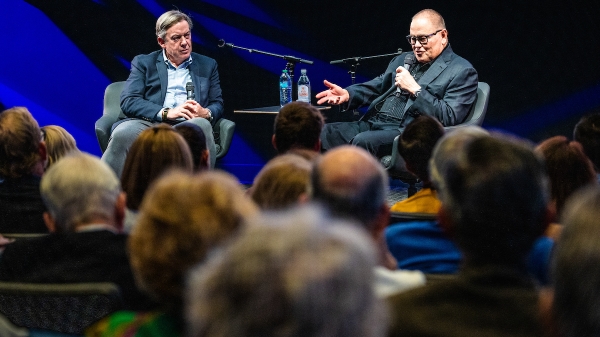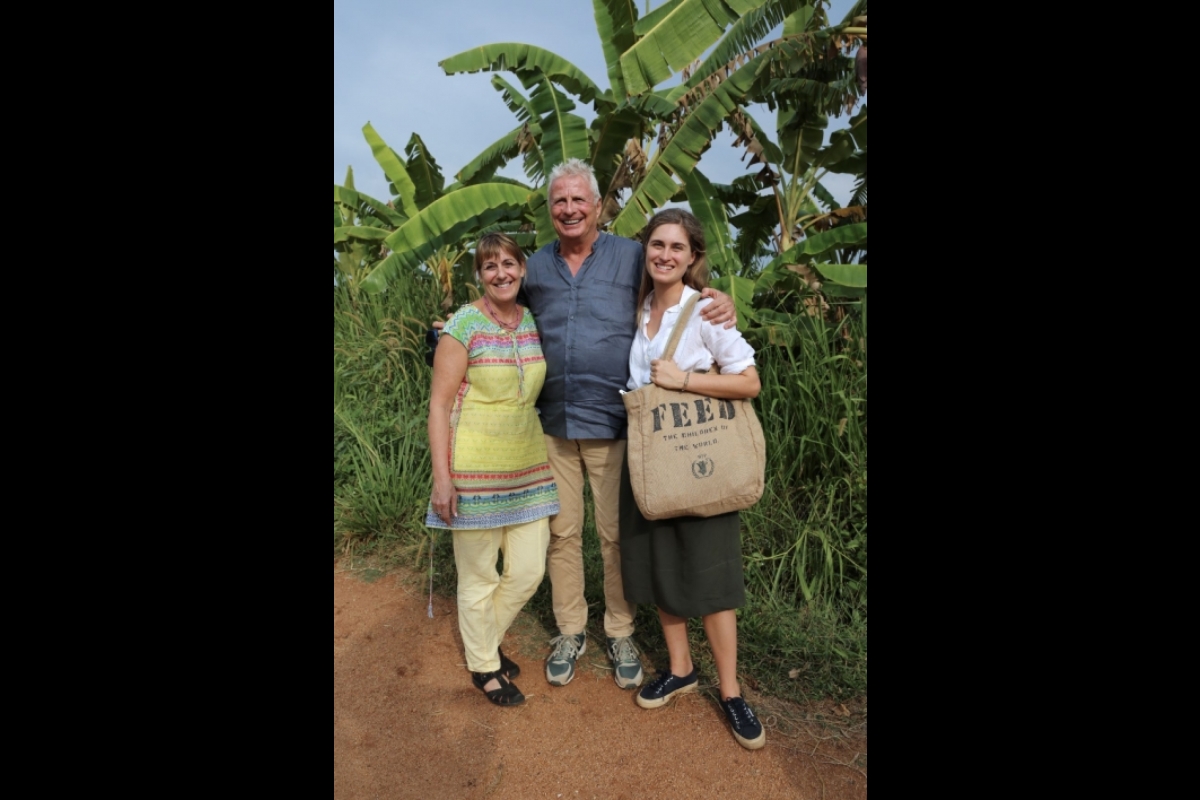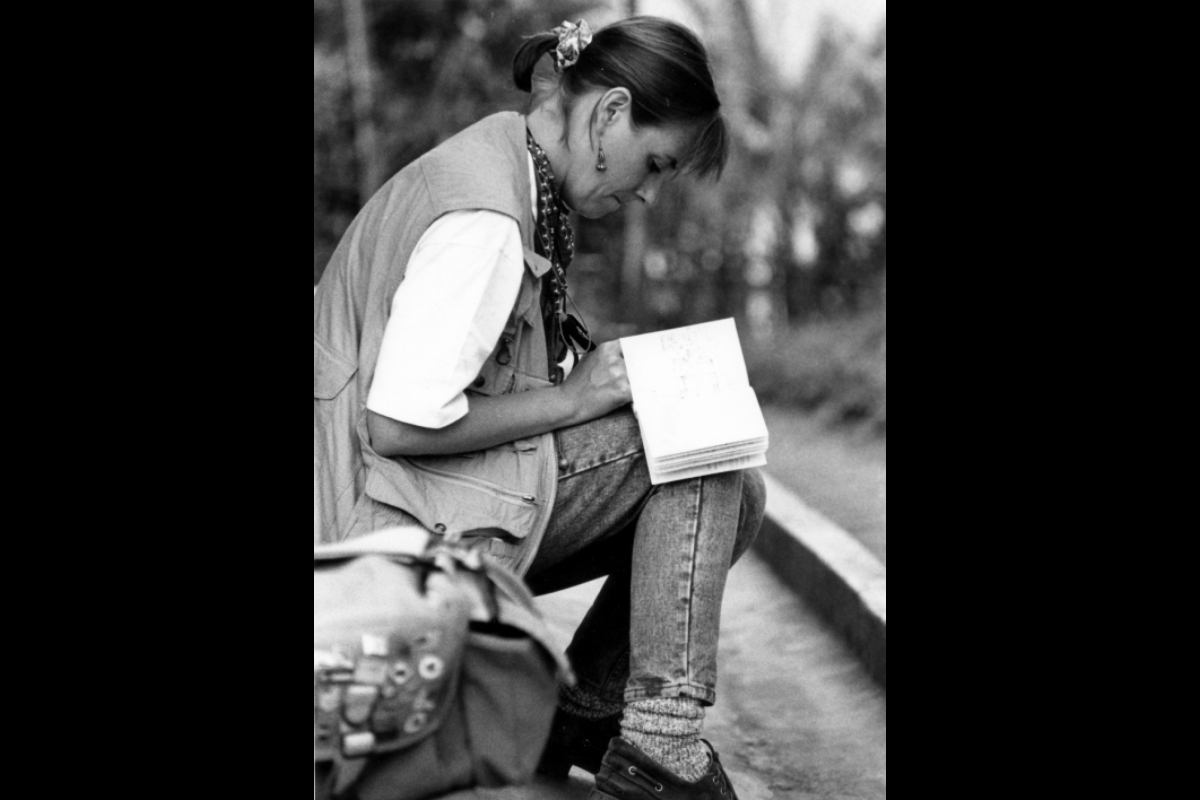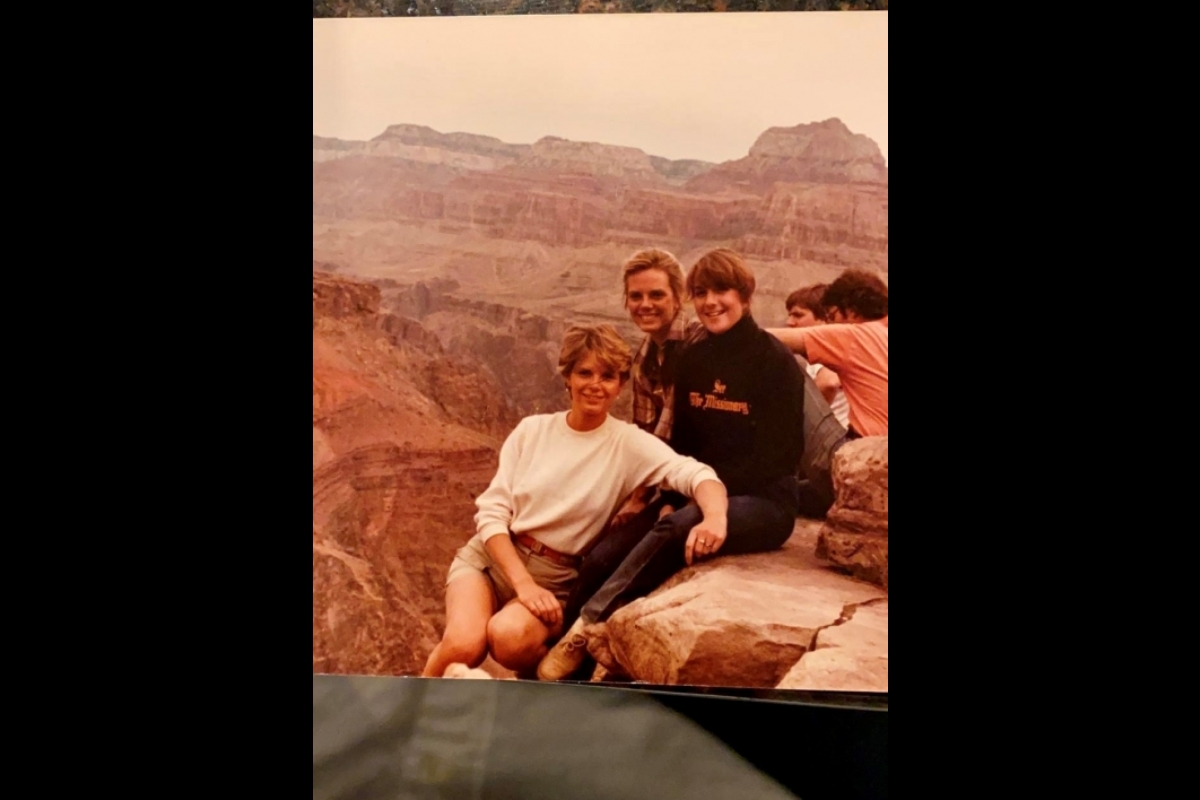ASU alum has spent career rushing to humanitarian crises around the world

After nearly 30 years of working on crises around the world, Arizona State University alumna Brenda Barton was able to see her humanitarian organization achieve the ultimate recognition.
The United Nations World Food Programme, which works to eradicate hunger and poverty, won the Nobel Peace Prize in 2020 — an honor that Barton called a “lifetime achievement award” for the WFP.
“I feel like it’s a cumulative recognition based on many things that WFP has done over the years,” she said.
The World Food Programme has worked for 75 years to promote food security and won the prize because of its “strong contribution towards mobilising U.N. member states to combat the use of hunger as a weapon of war and conflict,” according to the Nobel Committee.
Barton started working for the organization not long after graduating from ASU in 1984 with a degree in business administration and marketing. She started in communications, establishing the first field-based communications office, where she was often among the first humanitarians on the ground during a crisis. She is now the country director in Sri Lanka.
Barton was on a video call with colleagues in October when the news about the Nobel Peace Prize broke.
“People started writing in the chat boxes, ‘Congratulations!’ and we were like, ‘What?’” she said.
“I had to Google what was happening and I saw the news. I said, ‘I have to go!’ I ran into my office and called my team. I ordered a cake.”
Barton noted that the award came after the U.N. Security Council adopted a resolution in 2018 condemning the starvation of civilians as a weapon of war. The resolution notes that 75% of malnourished children worldwide live in countries affected by armed conflict.
That is relevant to Sri Lanka, she said.
"They are still in a fragile situation after a 30-year brutal civil war,” she said.
“The situation on the ground is still quite precarious.”
Barton answered some questions about her career from ASU Now:
Question: Why did you choose ASU?
Answer: I’m from Canada. I had a two-year degree in advertising and public relations and decided to get a university degree. My parents had spent time in Arizona so I decided to take a summer school class at ASU to see if I liked it.
I loved the campus and the business school had a great reputation.
Q: How did you get into humanitarian work?
A: Many people think they have their lives planned out but oftentimes the journey meanders to the right place.
I thought I was going to work in the States. I applied for a green card and it took quite a bit of time, so I went back to Canada and started to work there.
I went to Italy on summer vacation and met an Italian man. We wanted to stop the long-distance relationship, so I moved to Italy to be with him.
The only opportunity for a non-Italian to work was one of the three U.N. agencies that were based in Rome. So I got a job in communications with the World Food Programme.
Within a year of working for the WFP, they created the position of field-based communications, and I was the first person to do that.
During the historic famine in Somalia and the Horn of Africa, things I had seen on television were unfolding before my eyes, and I knew my heart was in this work. I knew that was where I wanted to put my energies.
Q: What did you do in that job?
A: I worked mostly in war zones. I was based in Nairobi, and all around Kenya wars were erupting.
We had the famine in Somalia, and the World Food Programme was airlifting food every day.
I would ride in the aircraft delivering bags of food and also ferrying journalists.
People were dying before my eyes. It was my first experience of a humanitarian crisis. Children who had died the night before would be covered with white sheets outside of huts. People were boiling camel skins to get nourishment. They were starving and it was horrendous.
That went on for a good year and half before the situation was stabilized.
In the meantime, refugees were pouring into Kenya from the civil war in Sudan.
In 1994 was the Rwandan genocide. I witnessed 1 million people cross over the border in one day, a human tidal wave from Rwanda into the Democratic Republic of the Congo. We had to put up camps and feed people immediately. There also was a cholera outbreak and people started to die.
My role kept expanding to where the crises were in Africa.
I was the one answering the tough questions, like, "Why can’t you do this faster? Why don’t people have food?"
I was doing live interviews with CNN on all of those things.
It was emotionally draining to see what was happening on the ground and to be the front-line spokesperson who tells the stories and to mobilize the media so that people far away could understand what was going on and ask their government to give aid to these countries.
Q: What has changed in humanitarian work over the years?
A: Many things changed over time and one was the organization of U.N. agencies.
There are many U.N. agencies, and one of the big things was that, during a large-scale emergency, we became more organized to respond.
The World Food Programme was named to be the logistics lead. So instead of everyone hiring planes to fly stuff in, it would be bundled and managed by the WFP.
That made a huge difference in collaboration.
Also, the categorization of emergencies was changed so that everyone sees it the same way. Now, for example, Yemen and Syria are category L3 in the order of emergencies. That is the top, red-alert emergency for organizations to pull out all the stops and move people from any country to help in that country.
Also what’s changed, sadly, is that we would have one or two red-alert emergencies in a year, and now we typically face five or six at the same time in a year.
Q: What’s something surprising about the job that people would not expect?
A: The travel agent part of it was a surprising thing. The only way to get journalists in was for them to be on the aid planes. So every night I would work until midnight, talking to journalists, booking flights and meeting them at 4 in the morning at some dusty airport and we would fly in and cover all the drama unfolding before our eyes.
Because I was with the journalists, who needed me to get them into these places, we could parlay that into making sure they understood what we were doing and have accurate information and our point of view.
Q: In your job as communications director, you worked with celebrities. What was that like?
A: After I worked in Africa, I was the deputy global communications director, responsible for all communications. In that capacity I met Sean Connery. We went to London and he used his amazing voice and amazing presence to make a TV commercial public service announcement. It was amazing that he gave us his time, and it got a lot of play.
I also traveled with John LeCarre, which was interesting because we thought we were going to go down in a plane. We were flying from Kenya into South Sudan and we were on a small, 10-passenger plane that had some mechanical problems. We had to turn back after we were almost all the way there. He kept these little square pieces of paper in his pocket and then he would pull them out and scribble furiously.
"The Constant Gardener” came out of that trip, and many of us saw ourselves in the characters.
I worked with Leonardo DiCaprio and the stars of “Blood Diamond” to film a public service announcement that ran in cinemas ahead of the film. In the movie, they wanted to make sure the scenes were realistic, so they used World Food Programme branding, and I had the idea to have them do a PSA.
Q: What were some of your successes?
A: I had a lot of space to be able to really shape the organization’s image but also be on the front lines of what was going on. I was able to have a lot of freedom to shape public opinion during the terrible floods in Mozambique in 2001. It was historic flooding that came during a holiday overnight, and hundreds of thousands of people lost their homes. A woman had a baby in a tree because no one could rescue her.
I flew around with the helicopters and saw what was going on and I realized nobody understood how grave the situation was.
We basically called out for the world to send planes and helicopters to help people in this emergency, and they responded. Many came from South Africa.
Q: What do you do now as a country director in Sri Lanka?
A: I felt like I had achieved what I wanted to do in communications, so in 2011, I wanted to shift to managing operations and I became deputy regional director of operations in southern Africa. I was based in Johannesburg and it was a great introduction to the broader management side of things.
Then I decided that I really wanted to run my own show and head up a country office. So I came to Sri Lanka in 2016. In many ways, it’s one of the best jobs in the WFP because it’s like running a franchise. I have to have a business mind, running the finances, logistics, human resources, accounting – I remember sweating over accounting courses at ASU.
The World Food Programme is 100% funded by voluntary contributions and you have to raise every dollar, so you have to show the value of the WFP and to be relevant to the needs on the ground. There was no funding for our programs in Sri Lanka. I wasn’t sleeping at night wondering how I would manage. I had to show the governments of countries like Japan and Australia why they should invest in our programs.
There’s a photo of me with (model and fashion designer) Lauren Bush Lauren, who started with the World Food Programme as a Princeton Fellow and was a student ambassador. She then founded FEED Projects. She came to see our school meals program in 2019 with the CEO of Clarins and with Paris Brosnan, the son of Pierce Brosnan, who did his own film of the visit. That was a different trip for me because it was influencers and I’m used to mainstream media. Lauren Bush Lauren has been one of our longest-standing supporters.
Q: If a student is reading this and thinks, “That’s the career for me,” what would you tell them?
A: Certainly, follow your passion and do something that every day gives you a sense that you’re making a difference.
Have a realistic view about this kind of work. It’s moving countries every three or four years and not establishing roots. My husband is an Emmy Award-winning journalist and is in Sri Lanka but not able to work as a TV journalist. There are sacrifices one has to make.
There’s a lot that can be done in your own neighborhoods and hometowns. Right now, food security is difficult for families. Food banks are in high demand and the COVID situation is undermining people's health. Food is important for the immune system. Get experience with that and see how you feel.
There are lots of volunteer opportunities overseas, which are a good way to see if it’s the right fit.
Q: How did your time at ASU influence your career path?
A: My idea for the “Blood Diamonds” PSA traced back to my time at ASU, when I was a Columbia Pictures rep on campus. That was a such a formative opportunity for me in so many ways.
I organized screenings and did a lot of press to get buzz around decision-makers, or influencers as they’re called today. I got to go to California.
It gave me so much experience coming out of university to put on my CV.
ASU was an amazing gateway for me that led to so much in my life, and I’m really grateful to have had that experience.
Top image: ASU alumna Brenda Barton, who is the country director for the World Food Programme in Sri Lanka, visits with schoolgirls. Providing school meals is an important part of the World Food Programme's mission. Photo courtesy of the United Nations World Food Programme.
More Business and entrepreneurship

How individuals and businesses can rethink their resolutions this year
Making resolutions is common this time of year.Losing weight. Leading a healthier lifestyle. Breaking a bad habit or two. These are all pledges millions of Americans make at the start of a new year.…

Scrappy, adaptive, inventive: A fireside chat with GoDaddy’s Bob Parsons
GoDaddy founder, Vietnam War Marine veteran and New York Times bestselling author Bob Parsons joined Arizona State University President Michael Crow for a fireside chat at ASU’s MIX Center in Mesa on…

Why consumers are flying high this holiday season
A few years ago, the airline industry was in serious trouble.The COVID-19 pandemic crippled travel, and U.S. airlines received $54 billion in taxpayer bailouts, according to the U.S. Department of…


